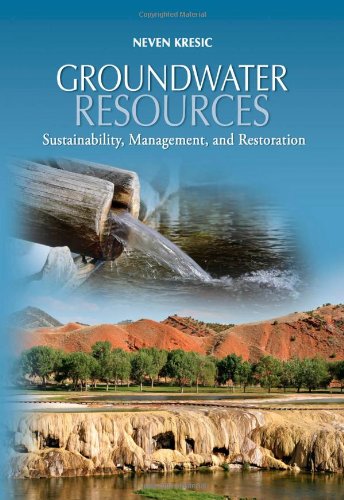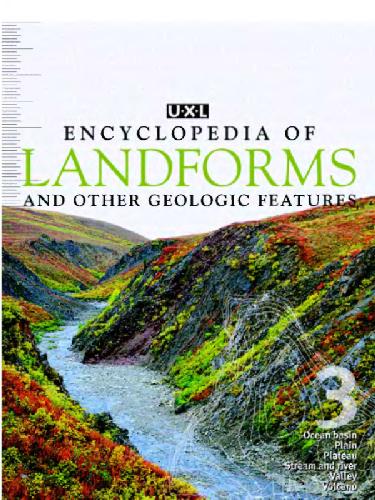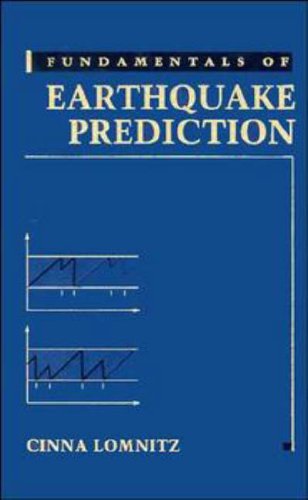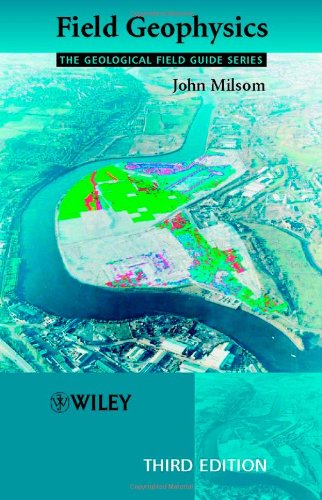Neven Kresic0071492739, 978-0-07-149273-7, 978-0-07-164091-6
Table of contents :
Contents……Page 6
Preface……Page 11
1.1 World’s Water Resources……Page 14
1.2 Freshwater Availability……Page 23
1.3 Water Use—Trends and Examples……Page 24
1.3.1 Use of Water in the United States……Page 30
1.3.2 Use of Water in Europe……Page 35
1.3.3 Use of Water in Africa……Page 37
1.3.4 Use of Water in China and India……Page 39
1.4 Water Scarcity……Page 43
1.5 Water Disputes……Page 49
1.6 Economics of Water……Page 52
1.6.1 Price and Value of Water……Page 57
1.6.2 Virtual Water and Global Water Trade……Page 68
1.7 Sustainability……Page 74
2.1 Definitions……Page 88
2.2 Groundwater System Geometry……Page 95
2.3.1 Porosity and Effective Porosity……Page 96
2.3.2 Specific Yield and Coefficient of Storage……Page 101
2.3.3 Groundwater Storage and Land Subsidence……Page 105
2.4 Water Budget……Page 110
2.5.1 Darcy’s Law……Page 122
2.5.2 Types and Calculations of Groundwater Flow……Page 127
2.5.3 Groundwater Velocity……Page 138
2.5.4 Anisotropy and Heterogeneity……Page 139
2.6.1 Initial Conditions and Contouring of Hydraulic Head……Page 145
2.6.2 Boundary Conditions……Page 150
2.7 Aquifer Types……Page 162
2.7.1 Sand and Gravel Aquifers……Page 163
2.7.2 Sandstone Aquifers……Page 173
2.7.3 Carbonate (Karst) Aquifers……Page 180
2.7.4 Basaltic and Other Volcanic Rock Aquifers……Page 187
2.7.5 Fractured Rock Aquifers……Page 188
2.7.6 Withdrawals from Principal Aquifers in the United States……Page 197
2.8 Aquitards……Page 199
2.9 Springs……Page 207
2.9.1 Types and Classifications of Springs……Page 209
2.9.2 Thermal and Mineral Springs……Page 213
2.9.3 Spring Hydrograph Analysis……Page 214
2.10 Groundwater in Coastal Areas and Brackish Groundwater……Page 226
2.10.1 Saltwater Intrusion……Page 231
2.10.2 Inland Brackish Water……Page 233
3.1 Introduction……Page 248
3.2 Rainfall-Runoff-Recharge Relationship……Page 249
3.3 Evapotranspiration……Page 254
3.4 Infiltration and Water Movement Through Vadose Zone……Page 258
3.4.2 Darcy’s Law……Page 260
3.4.3 Equations of Richards, Brooks and Corey, and van Genuchten……Page 264
3.5.1 Climate……Page 266
3.5.2 Geology and Topography……Page 270
3.5.3 Land Cover and Land Use……Page 272
3.6 Methods for Estimating Groundwater Recharge……Page 275
3.6.1 Lysimeters……Page 277
3.6.3 Water Table Fluctuations……Page 279
3.6.4 Environmental Tracers……Page 281
3.6.5 Baseflow Separation……Page 291
3.6.6 Numeric Modeling……Page 295
4.1 Introduction……Page 308
4.2 Natural Climatic Cycles……Page 309
4.2.1 Droughts……Page 317
4.3 Anthropogenic Climate Change……Page 326
4.3.1 Impacts on Surface Water and Groundwater Resources……Page 330
5.1 Introduction……Page 340
5.2 Natural Groundwater Constituents……Page 341
5.2.1 Total Dissolved Solids, Specific Conductance, and Salinity……Page 342
5.2.2 Hydrogen-Ion Activity (pH)……Page 344
5.2.3 Reduction-Oxidation (Redox) Potential (Eh)……Page 345
5.2.4 Primary Constituents……Page 346
5.2.5 Secondary Constituents……Page 351
5.3 Groundwater Contamination and Contaminants……Page 353
5.3.1 Health Effects……Page 355
5.3.2 Sources of Contamination……Page 360
5.3.3 Naturally Occurring Contaminants……Page 368
5.3.4 Nitrogen (Nitrate)……Page 372
5.3.5 Synthetic Organic Contaminants……Page 375
5.3.6 Agricultural Contaminants……Page 382
5.3.7 Microbiological Contaminants……Page 387
5.3.8 Emerging Contaminants……Page 390
5.4.1 Primary Drinking Water Standards……Page 393
5.5 Fate and Transport of Contaminants……Page 394
5.5.1 Dissolution……Page 407
5.5.2 Volatilization……Page 411
5.5.3 Advection……Page 414
5.5.4 Dispersion and Diffusion……Page 416
5.5.5 Sorption and Retardation……Page 422
5.5.6 Biodegradation……Page 432
5.5.7 Analytical Equations of Contaminant Fate and Transport……Page 435
6.1 Introduction……Page 450
6.2 Oxidation……Page 452
6.3 Clarification……Page 454
6.4.1 Rapid Sand Filters……Page 456
6.4.2 Slow Sand Filters……Page 457
6.4.3 Pressure Filters……Page 458
6.4.6 Ceramic Filters……Page 459
6.5 Membrane Filtration……Page 460
6.7 Ion Exchange and Inorganic Adsorption……Page 463
6.8 Biological Treatment……Page 464
6.10.1 Chlorine……Page 465
6.10.2 Chloramines……Page 467
6.10.5 Ultraviolet Light Disinfection……Page 468
6.12 Removal of Specific Constituents from Groundwater……Page 469
6.12.1 Iron and Manganese Removal……Page 470
6.12.2 Hardness……Page 472
6.12.3 Nitrates……Page 474
6.12.4 Total Dissolved Solids……Page 475
6.12.5 Radionuclides……Page 478
6.12.7 Volatile Organic Compounds and Synthetic Organic Compounds……Page 479
6.12.9 Arsenic……Page 480
6.12.10 Trace Metals and Inorganic Compounds……Page 486
6.13 Drinking Water Treatment Costs……Page 487
7.1 Introduction……Page 496
7.2 Water Wells……Page 500
7.2.1 Vertical Wells……Page 501
7.2.2 Collector Wells……Page 528
7.3 Subsurface Dams……Page 537
7.4 Spring Development and Regulation……Page 543
8.1 Introduction……Page 552
8.2 Concept of Groundwater Sustainability……Page 562
8.2.1 Nonrenewable Groundwater Resources……Page 570
8.3.1 Groundwater Quantity……Page 573
8.3.2 Groundwater Quality……Page 575
8.3.3 Transboundary (International) Aquifers……Page 584
8.4 Integrated Water Resources Management……Page 588
8.5 Monitoring……Page 591
8.5.1 Ambient Monitoring……Page 594
8.5.2 Compliance Monitoring……Page 596
8.5.3 Performance Monitoring……Page 599
8.5.4 Detecting Contamination……Page 602
8.6 Data Management and GIS……Page 607
8.6.1 Data Management……Page 609
8.6.2 Types of Data……Page 613
8.6.3 Data Management Tools……Page 617
8.6.4 Geographic Information Systems (GIS)……Page 620
8.6.5 Data Quality……Page 622
8.7 Protection of Groundwater Resources……Page 623
8.7.1 Groundwater Vulnerability Maps……Page 628
8.7.2 Delineation of Source Water Protection Zones……Page 632
8.7.3 Management Strategies……Page 640
8.8 Modeling and Optimization……Page 647
8.8.1 Numeric Groundwater Models……Page 648
8.8.2 Time Series Models……Page 670
8.9 Artificial Aquifer Recharge……Page 676
8.9.1 Methods of Artificial Aquifer Recharge……Page 680
8.9.2 Aquifer Storage and Recovery……Page 687
8.9.3 Source Water Quality and Treatment……Page 688
9.1 Introduction……Page 708
9.2 Risk Assessment……Page 714
9.2.1 Data Collection and Evaluation……Page 716
9.2.2 Exposure Assessment……Page 717
9.2.3 Toxicity Assessment……Page 718
9.2.4 Risk Characterization……Page 719
9.3 Remedial Investigation and Feasibility Study……Page 721
9.3.1 Development and Screening of Remedial Alternatives……Page 726
9.3.2 Detailed Analysis of Remedial Alternatives……Page 729
9.3.3 Treatability Studies……Page 730
9.4 Source-Zone Remediation……Page 731
9.4.1 NAPLs Problem……Page 737
9.4.2 Physical Containment……Page 745
9.4.3 Fluid Removal Technologies……Page 752
9.4.4 In Situ Chemical Oxidation……Page 763
9.4.5 Enhanced Bioremediation……Page 769
9.4.6 Thermal Technologies……Page 770
9.5 Dissolved Phase (Plume) Remediation……Page 775
9.5.1 Pump and Treat……Page 778
9.5.2 Permeable Reactive Barriers……Page 786
9.5.3 Bioremediation……Page 791
9.5.4 Monitored Natural Attenuation……Page 800
9.6 Measuring Success of Remediation……Page 805
A: Values of W(u) for Fully Penetrating Wells in a Confined, Isotropic Aquifer……Page 820
B1: Unit Conversion Table for Length, Area, and Volume……Page 824
B2: Unit Conversion Table for Flow Rate……Page 826
B3: Unit Conversion Table for Hydraulic Conductivity and Transmissivity……Page 827
A……Page 828
B……Page 831
C……Page 832
D……Page 835
E……Page 837
F……Page 839
G……Page 841
H……Page 842
I……Page 843
K……Page 845
M……Page 846
N……Page 848
P……Page 850
R……Page 853
S……Page 855
T……Page 860
U……Page 862
V……Page 863
W……Page 864
Z……Page 865







Reviews
There are no reviews yet.